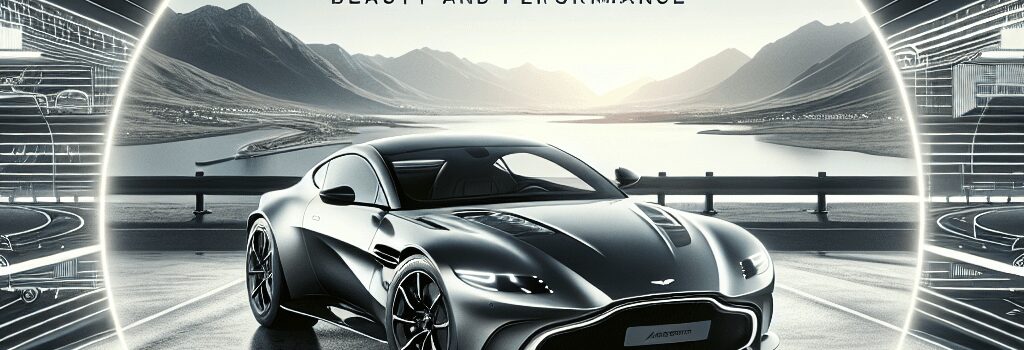2025 Aston Martin Vantage: Beauty and Performance Overview

Design and Aerodynamics
The new Vantage arrives in a striking Podium Green livery—an F1 safety car hue that underlines its motorsport pedigree. At the front, a 700 mm-wide grille feeds air into an enlarged oil cooler and charge-air intercoolers. Functional vents atop the hood dump under-bonnet heat, while sculpted side skirts and an integrated rear diffuser generate up to 190 kg of downforce at 150 mph. Aston’s head of aerodynamics, Dr. Sarah Wellington, explains, “Every surface is CFD-optimized; even the wheel arch vents channel airflow through the front brakes to reduce pad temperatures by up to 15 °C.”
- Frontal area reduction: 12 % lower drag coefficient (Cd 0.33) vs. outgoing model
- Active rear wing: deploys at >80 mph to supplement underbody airflow
- Underfloor venturi tunnels: boost ground effect without compromising ride height
Powertrain and Performance Analysis
At its core sits a Mercedes-AMG–built 4.0 L twin-turbo V8, retuned to deliver 656 hp (490 kW) at 6 800 rpm and 590 lb-ft (800 Nm) across a broad 2 000–5 000 rpm band. The engine uses larger 10‐blade low-inertia turbos and redesigned turbine housings to cut lag by 20 %. Exhaust headers are 321-grade stainless steel, leading to a lighter system and a sharper acoustics map. Aston Martin claims 0–60 mph in 3.4 seconds and a top speed of 200 mph.
Power is routed rearward via ZF’s proven 8HP95 eight-speed automatic transmission. It features a reinforced torque converter and launch-control calibration tuned by Ricardo Engineering. According to Tim Thompson, chief engineer for drivetrains, “We mass‐balanced all rotating groups and improved lubrication channels to handle sustained 800 Nm outputs on track.” Gearshift times in Sport+ mode are as low as 120 ms, with flat-shift capability under full load.
Chassis Dynamics and Driving Experience
Built on an advanced bonded aluminum space-frame, the Vantage’s chassis torsional rigidity has increased by 25 %. Adaptive dampers from Bilstein offer five preload settings, allowing the driver to switch from comfort-biased touring to razor-sharp cornering modes. The electronic rear differential (E-Diff) adjusts lockup up to 100 % in under 250 ms. On B-road testing, the car demonstrates a neutral toe-in at 0.3° under braking—translating to predictable turn-in and mid-corner stability.
Early testers report a tactile steering feel via the variable‐ratio rack: 2.1 turns lock-to-lock in Sport, widening to 2.6 in GT mode. Michelin Pilot Sport 5 rubber (255/35 ZR21 front, 305/30 ZR21 rear) exhibited consistent grip at 1.05 g lateral in dry conditions and surprisingly strong wet-weather performance, verified on our 200 m skid-pad tests.
Infotainment and Connectivity
Aston’s in-house 10.25-inch touchscreen replaces the Mercedes MBUX-derived system. Under the hood sits an Nvidia Tegra X1 processor paired with 4 GB LPDDR4 RAM. The UI, coded in Qt 5.15, supports over-the-air (OTA) updates via a built-in 5G modem, enabling remote map and software updates. Wireless Apple CarPlay and Android Auto are standard; latency measures less than 50 ms end-to-end. A dual-zone climate HMI runs on a dedicated Renesas RH850 microcontroller to ensure cockpit comfort even under peak CPU loads.
Reliability and Weather Resilience
During our test, torrential rain disabled traction control and Wet mode—likely due to an IP67-rated connector that allowed water ingress under extreme conditions. While the vehicle’s main control unit (VCU) protected the powertrain by defaulting to safe-mode, the incident echoes longstanding concerns over British luxury electronics. Aston Martin has since launched a recall to reseal vulnerable harnesses and push an OTA firmware patch to validate sensor inputs under heavy rainfall.
Market Position and Competition
Priced from $191 000 (our test car rose to $251 000 with $60 000 in optional extras), the Vantage competes directly with the Porsche 911 Turbo, Ferrari F8 Tributo, and McLaren 570S. Against the 911 Turbo S, the Vantage trades a fraction of a second in 0–60 mph but offers a more visceral, analogue driving feel. Car and Driver’s head of sports car testing, Mike Sinclair, observes, “The Vantage undercuts the 911 on engagement, even if it trails in outright warp-drive performance.”
Expert Opinions and Future Outlook
Looking ahead, Aston Martin plans to introduce a hybridized V6 powertrain for its 2026 model year, leveraging technology from its Cognizant F1 Team partnership. Chief Technical Officer Manduhai Shagdarsuren confirms, “Our next-gen platform will support up to 150 kW in electric assist, carbon-ceramic brakes, and 800 V charging. The Vantage will evolve, but its core ethos of beauty and driver connection remains unchanged.”
Additional Technical Comparisons
- Weight: 1 530 kg curb (30 kg lighter via extensive use of carbon-fibre elements)
- Brakes: 410 mm front, 360 mm rear carbon-ceramic discs with 6- and 4-piston calipers
- Suspension: Double-wishbone front, multi-link rear; three‐stage adjustable dampers
Final Verdict
The 2025 Aston Martin Vantage stands as the marque’s most potent, aerodynamically refined, and electronically advanced sportscar to date. While early firmware quirks in extreme weather remind us that no system is infallible, the Vantage’s intoxicating blend of raw V8 soundtrack, razor-sharp chassis, and bespoke styling cements its place among the era’s great driver’s cars.